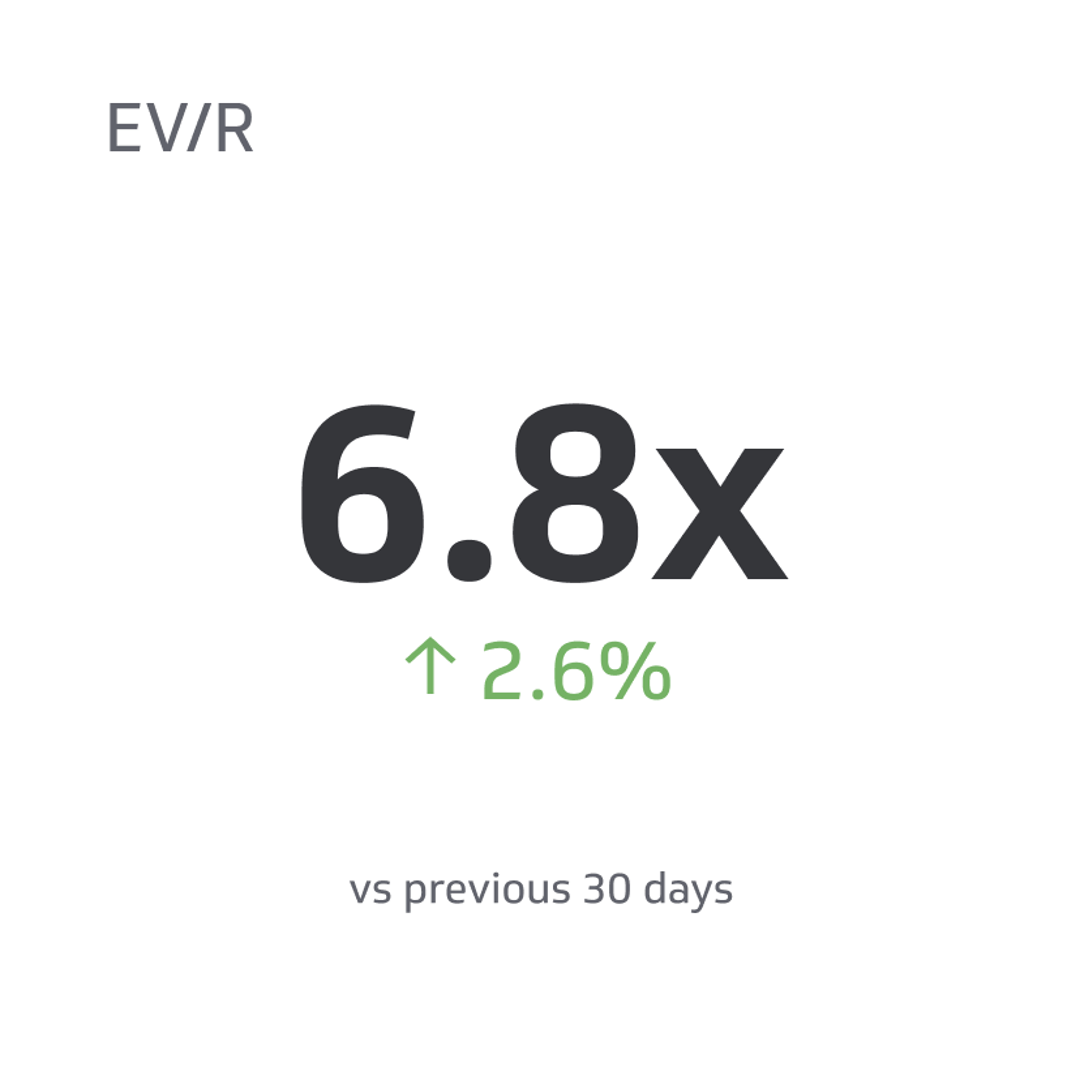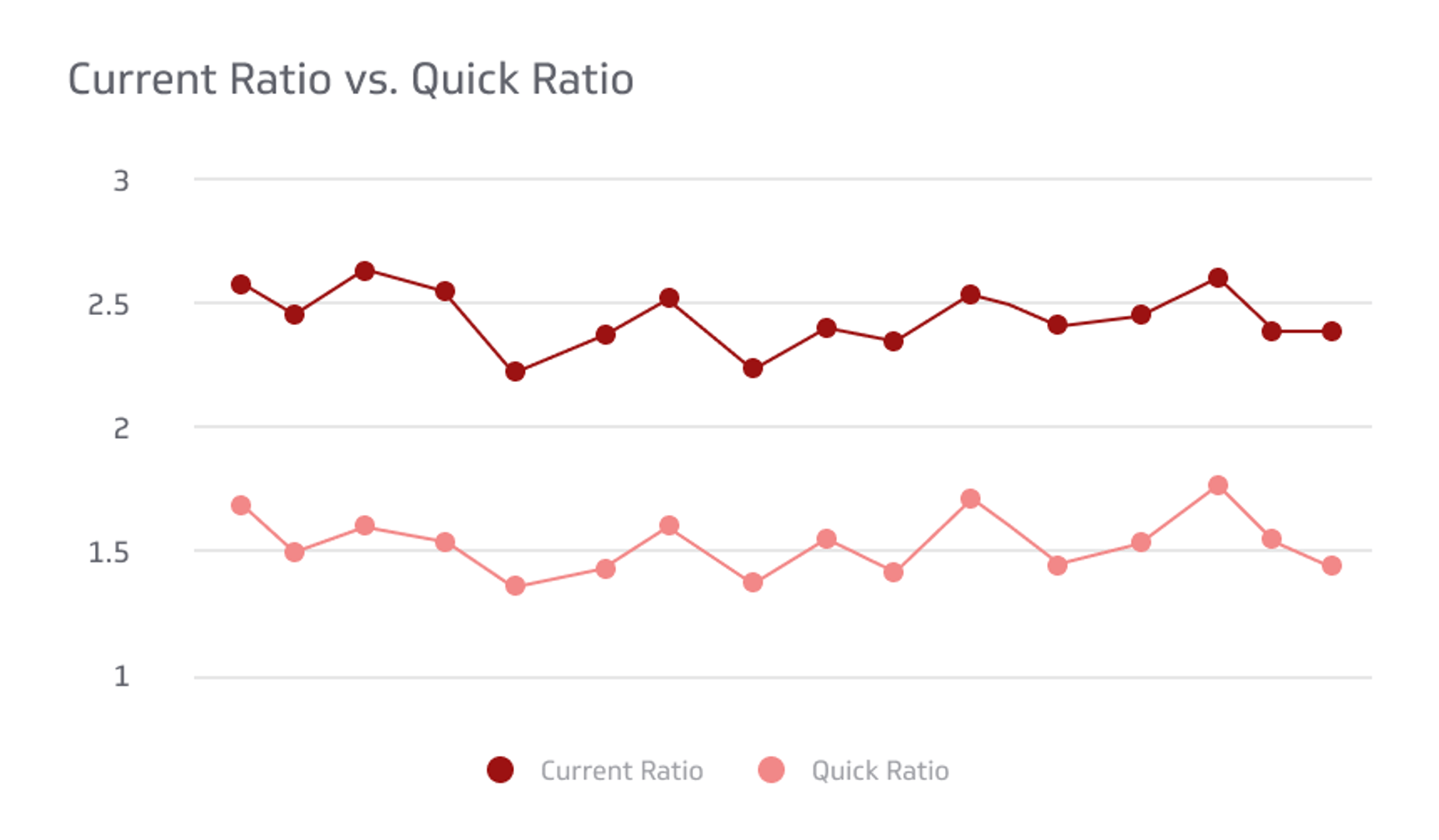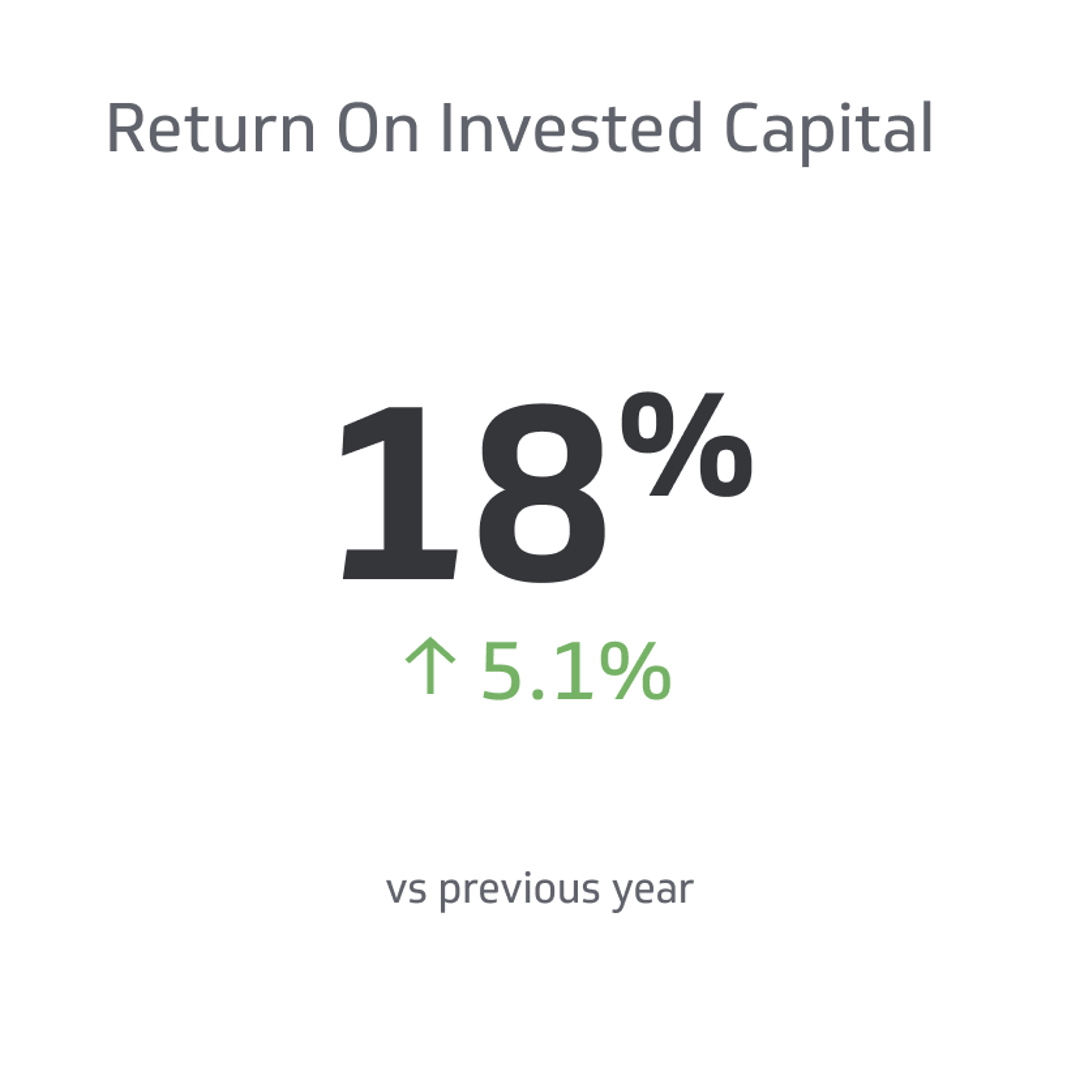Enterprise-Value-to-Revenue Multiple (EV/R)
The EV/R compares a company's enterprise value to its revenue and helps investors and analysts gauge whether a stock is priced reasonably
Track all your Financial KPIs in one place
Sign up for free and start making decisions for your business with confidence.

Do you want to know how successful a business is? Are you interested in evaluating it based on its long-term potential for growth, profitability, and financial health? If you answer yes, you should get familiar with Enterprise-Value-to-Revenue Multiple (EV/R).
EV/R is a critical metric that can give insight into the company's performance and provide valuable information when making decisions about financing or other strategic investments.
EV/R takes all of the company's assets and divides them up among their current revenues. This formula helps to assess businesses' relative strengths given their size, valuation metrics, and sector taken as a whole.
Keep reading this blog post to learn all about EV/R, including what factors go into determining it and why it's essential for investors and entrepreneurs alike.
What Is Enterprise-Value-to-Revenue Multiple (EV/R)?
Fundamental metrics are crucial in determining a company's stock value, with enterprise value-to-revenue multiple (EV/R) being one of the most important metrics that investors consider.
The EV/R compares a company's enterprise value to its revenue and helps investors and analysts gauge whether a stock is priced reasonably. Moreover, the enterprise value-to-sales (EVS) multiple is instrumental in estimating a company's value in a potential acquisition.
By using these vital valuation parameters, businesses can make informed decisions, and investors can identify high-performing stocks. Ultimately, an intricate understanding of such financial metrics can make all the difference in determining a company's worth and long-term profitability.
Why Is EV/Revenue Multiple Important?
Investors and market analysts employ various methods to estimate a company's value, but the EV/R multiple is the most important one. This tool compares a company's earnings with its market value, offering a more accurate estimate of the business's potential.
While other profitability measurements like the return on invested capital (ROIC) have their uses, the EV/Revenue multiple gives investors a clear picture of how much an organization is worth.
Moreover, investors can make better-informed decisions about where to allocate their resources by considering a company's market value in conjunction with its earnings.
In short, the value of the EV/Revenue multiple must be balanced for those looking to maximize the potential of their investments in the business world.
Uses of EV to Revenue Multiple
Evaluating a company's financial health can be challenging when the EBITDA or net income is negative. In these instances, EV/EBITDA or P/E ratios may not be sufficient, and financial analysts may have to rely on gross profits or revenue instead.
Conversely, negative EBITDA values can make the calculation of the EV/EBITDA ratio pointless. Even negligible positive EBITDA values may result in an exceptionally high multiple, which may only sometimes be advantageous.
Hence, financial analysts use EV/Revenue multiples to estimate a company's value. By doing so, they can better assess a company's financial health and determine whether investing is worthwhile.
How to Calculate EV/Revenue Multiple?
When it comes to valuing a company, one method that is often employed is the EV/Revenue multiple. Essentially, this metric divides the company's enterprise value (EV) by its annual revenue. The resulting figure shows how much investors will pay for every dollar the company earns.
Calculating the EV/Revenue multiple involves some sophisticated math, but it can yield valuable information that helps investors to make informed decisions.
If a company's EV/Revenue multiple is higher than its competitors, it could be overvalued. Conversely, a lower EV/Revenue multiple might suggest that the company is undervalued.
For instance, if a company has an EV of $20 billion and its revenue is $5 billion, its EV/Revenue multiple would be four. This means that investors are willing to pay $4 for every dollar of revenue the company generates.
By using this metric, investors can compare the performance of similar companies and make informed investment decisions.
Limitations of Using Enterprise Value-to-Revenue Multiple (EV/R)
For one, it doesn't consider a company's profitability or cash flow, which can be crucial factors in determining its true worth.
Additionally, EV/R multiples may vary widely across different industries, making comparisons between companies less reliable. As with any valuation method, it's essential to consider multiple factors and approaches to get a holistic picture of a company's value.
EV/Revenue Multiple in SaaS Industry Valuation
In the world of early-stage SaaS startups, it's not uncommon for venture investors to turn to the EV/Revenue multiple to evaluate possible investments.
While the preference may lie elsewhere, with a lack of profits and a subscription-based business model, investors often need more options when determining a company's prospects. And so, the EV/Revenue multiple becomes a critical tool in the investor's arsenal, providing a glimpse into the potential for success and growth.
While it may not be the perfect solution, savvy investors recognize its value and use it to their advantage in evaluating opportunities in this high-growth industry.
How to Interpret EV to Revenue Ratio?
Interpreting the EV to Revenue ratio is essential to investing in any company. This ratio allows investors to evaluate the market's beliefs in a company's future revenue potential.
A higher EV/Revenue multiple suggests that the market has faith in the company's ability to generate revenue and is willing to pay more per dollar of sales.
For investors, a lower multiple is preferred as it indicates that a company might be undervalued and could generate more profitable returns in the future. However, investing in high multiple companies may also pay off if the growth potential is substantial.
Ultimately, deciding to pay for growth is subjective, and investors must consider the potential risks and rewards before making any decisions.
What Is Equity vs. EV Multiples?
When evaluating a company's worth, equity and enterprise value multiples are crucial metrics that investors and analysts must understand. Put simply, equity value reflects the value of a company's shares, while enterprise value considers both shareholders and debt holders.
Applying 3-5 multiples of either metric can vary depending on the specific company or industry. Understanding these nuances is essential for anyone looking to make informed decisions in business and finance.
By staying on top of equity and EV multiples, investors can better understand a company's true worth and potential for growth.
Why Do We Prefer EV Multiples to Equity Multiples?
Enterprise value multiples are often preferred over equity multiples for various reasons in the business world.
One of the primary reasons is their ability to compare companies with different leverage levels. This is essential when equity multiples might not be enough to represent a company's financial performance clearly.
Furthermore, as leverage levels tend to fluctuate over time, enterprise value multiples tend to be more stable and are less affected by changes in the capital structure of a business.
For these reasons, business professionals have come to consider enterprise value multiples as a more reliable tool for evaluating company performance when compared to equity multiples alone.
What Are the Most Commonly Used EV Multiples?
When assessing a company's value, investors and business people often turn to specific multiples to quickly evaluate a business's worth.
One of the most commonly used multiples is the EV/EBITDA multiple, or enterprise value-to-earnings before interest, taxes, depreciation, and amortization. This multiple is a reliable tool for those interested in comparing companies that operate in similar industries.
By using this multiple, investors can quickly understand a business's profitability even before considering tax and interest payments. It is an essential metric for those looking to make informed investment decisions and a vital tool for anyone in the business world.
How Do You Convert EV to Equity Value?
When determining equity value from EV, it is essential to follow a calculated approach.
The first stage is deducting the enterprise value from any outstanding debt and its corresponding non-controlling interest and preferred stock. This will give you a more realistic understanding of the company's value.
The next step is to add any cash and its equivalents to that figure to arrive at an accurate equity value. This process may seem daunting, but it is essential for any professional or business looking to make informed decisions about investing or acquiring a company.
By learning how to convert EV to equity value, you can ensure that you are making well-informed, strategic decisions that will drive your business forward.
What's The Difference Between EV/R And EV/EBITDA
Understanding the difference between enterprise value-to-revenue multiple (EV/R) and enterprise value-to-EBITDA (EV/EBITDA) is crucial for investors making informed decisions.
EV/EBITDA is a popular metric used to evaluate a company's financial health by examining its ability to generate operating cash flows.
On the other hand, EV/R focuses purely on a company's revenue generation capabilities beyond operating costs. Both measures are critical components of financial analysis, and investors should consider both when deciding whether to invest in a company.
By understanding the distinctions between these two metrics, investors can better interpret financial statements and assess a company's potential for growth and profitability.
How Do You Use EV Sales Multiple To Value a Company?
The EV Sales Ratio is a widely accepted methodology for determining a company's valuation in the business world. This valuable tool enables investors to gauge a company's financial health and potential for growth by looking at its sales concerning its overall enterprise value.
By dividing the enterprise value by the company's annual sales, investors can get a clearer picture of the company's true value. This information is critical in helping investors make informed decisions about buying or holding onto a company's stock.
As such, the EV to Sales Ratio is a key metric that professionals use to assess a company's worth in the market.
Conclusion
In conclusion, enterprise value multiples are preferred over equity multiples due to their ability to compare companies with different leverage levels.
The most commonly used EV multiple is the EV/EBITDA multiple, which helps investors quickly understand a business's profitability even before considering tax and interest payments.
Additionally, it is essential to follow a calculated approach when converting EV to equity value to make informed investment decisions.
Lastly, the difference between Enterprise Value-to-Revenue Multiple (EV/R) and Enterprise Value-to-EBITDA (EV/EBITDA) should be considered.
Both metrics provide insight into how well a company can generate operating cash flows or revenue generation capabilities. Ultimately, these key points should help any investor succeed in making wise investments that will benefit their financial goals moving forward.



